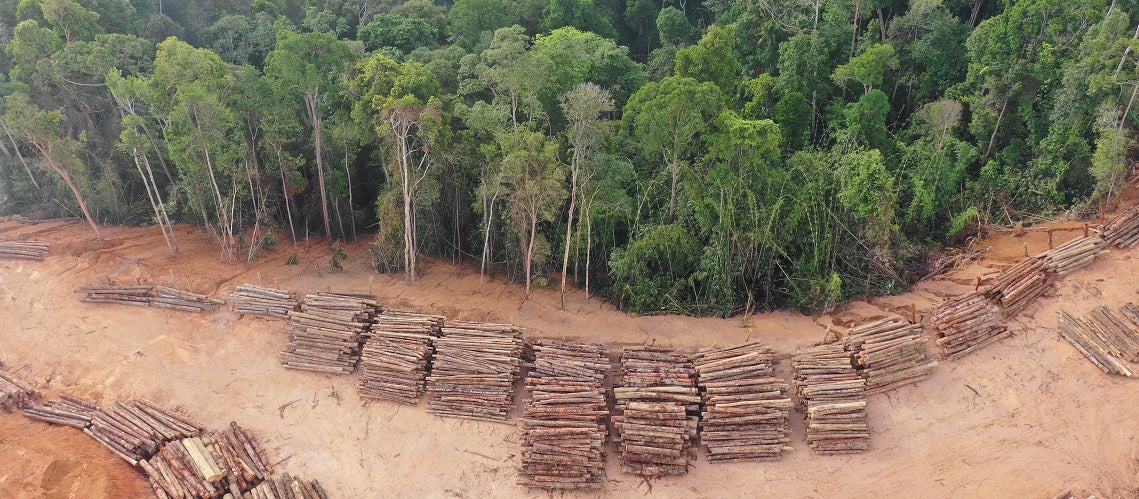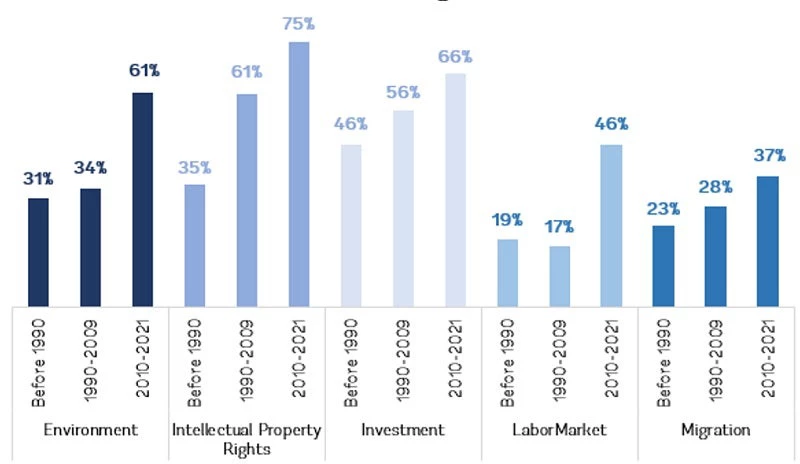 Deforestation. Aerial photo of logging in Malaysia rainforest
Deforestation. Aerial photo of logging in Malaysia rainforest
Since the global financial crisis of 2008, countries have been embracing more protectionist measures and shying away from multilateral trade agreements. However, the rise of smaller preferential trade agreements, or PTAs, has been a promising development towards bolstering international trade.
PTAs set rules for commerce and remove trade barriers among a limited number of member countries. The agreements have increased from fewer than 50 in 1990 to more than 350 today. And the trend has accelerated: The number has more than doubled since 2005, according to World Bank data.
In addition to provisions that seek to increase economic integration and boost trade, most new PTAs also include non-trade provisions that delve into other policy areas, including some indirectly linked to trade, such as labor protections and environmental policy.
Do these provisions work? And are they having the intended impact?
A new World Bank-CEPR eBook sheds new light on these critical questions, finding that some provisions can be effective and achieve desired outcomes. In contrast, others can have unintended – and even perverse – consequences. The book is an essential first assessment of the effectiveness and impact of non-trade provisions in trade agreements, particularly in emerging markets and developing economies.
Nontrade provisions aside, it is generally agreed that preferential trade agreements have advanced economic integration and increased global trade. As of 2021, about half of world trade had occurred under some form of PTA.
PTAs have helped cut trading costs and accelerate growth opportunities, particularly in low and middle-income economies , according to a previous World Bank eBook. One study found that regional trade agreements increased trade between members by 40 percent on average.
Often, these agreements include non-trade provisions. PTAs are often called “deep trade agreements” because they cover policy areas such as investment, intellectual property rights, and migration. Such provisions are trade-related because they can promote economic integration by easing the cross-border movement of goods, services, capital, ideas, and people.
Yet other provisions in PTAs are intended primarily to improve social welfare in member countries. These provisions – especially those concerned with labor protections and environmental policy – are the most dynamic area of non-trade clauses in PTAs. Over 40 percent of preferential trade agreements that went live between 2010 and 2021 included labor or environmental provisions.
The number of non-trade provisions in PTAs has been rising.
Share of New Agreements

Two recent studies look at the starkly differing impacts of such non-trade provisions and are particularly enlightening.
A 2023 study of the impact of child-labor bans in PTAs came to a startling conclusion: Bans on young children working may lead many poor households to push older children to work and drop out of school. This is because many low-income families in developing countries rely on child labor as a source of income, so eliminating that source often prompts these households to double down on using older child labor.
So, however well-intentioned these child-labor bans may be, their inclusion in PTAs can have the opposite of the intended effect.
As for environmental protection clauses in PTAs, however, the effect is often closer to what was intended.
A 2021 study – examined at length in an earlier eBook, The Economics of Deep Trade Agreements – concluded that environmental provisions effectively limit deforestation, one of the most pressing environmental challenges of the modern era.
The study found that such provisions prevented about 7,500 square kilometers of deforestation between 2003 and 2014, while trade agreements without those provisions resulted in substantial increases in net forest loss.
How do these non-trade provisions achieve this beneficial result? If crafted correctly, according to the study, they can limit agricultural land expansion that otherwise would occur following a country’s entry into a PTA.
These topics are discussed in the new eBook, Beyond Trade: How Deep Trade Agreements Shape Non-Trade Outcomes. While the analysis and research in both eBooks assesses the impact of non-trade commitments in trade agreements, an equally important issue is how countries implement the agreements to ensure they reap their benefits to the fullest. To help with this, the World Bank has a new toolkit to help policymakers and practitioners evaluate, benchmark, and implement preferential trade agreements.



Join the Conversation